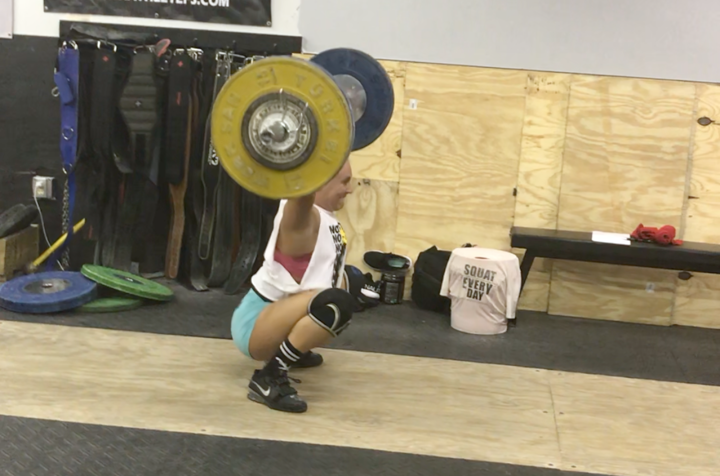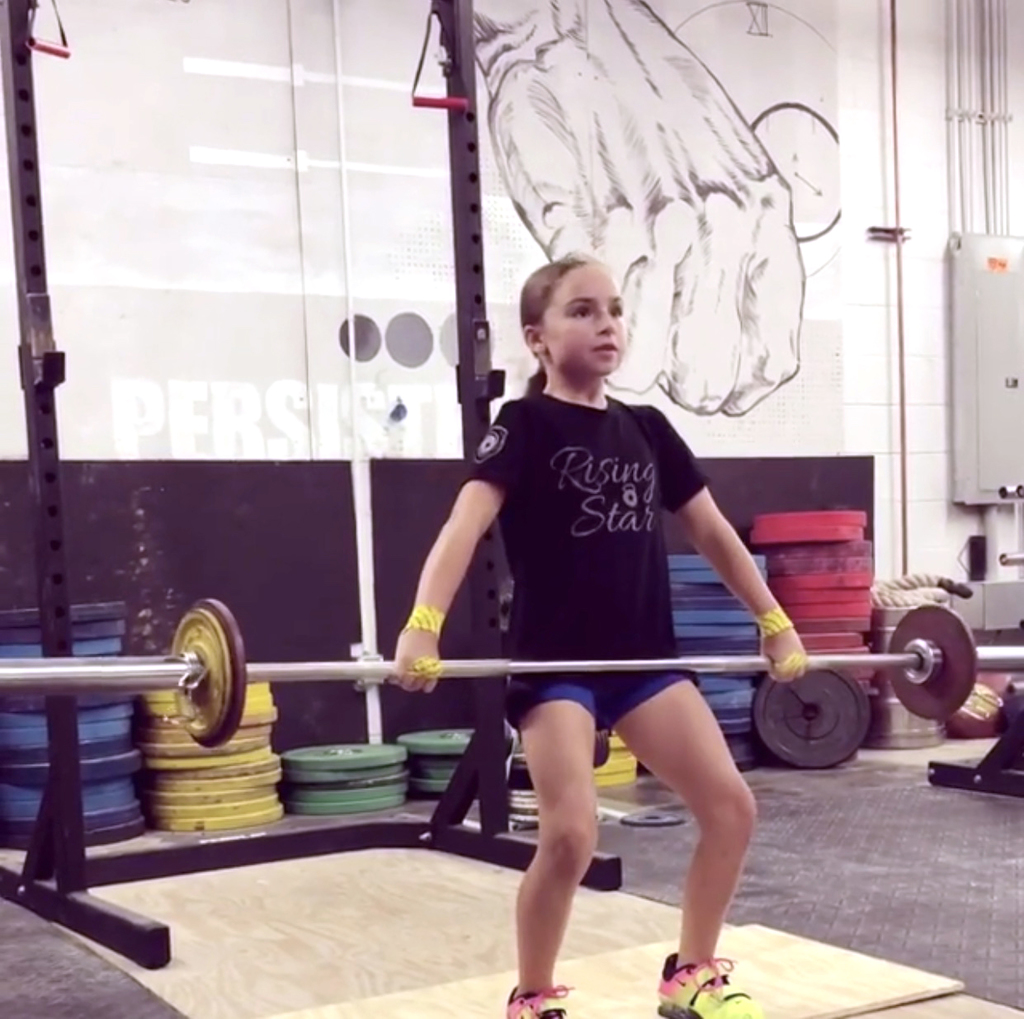There are two things that I have learned from Coach Don McCauley that separate him from most coaches. When I joined the team of MuscleDriver USA, I kept hearing Coach McCauley use terms that at the time were pretty darn unique in the weightlifting world like:
- “Faster as you go”
- “Sit on the hamstrings”
- “Sit straight down”
- “Continue pulling”
- “Dirty Dancing”
There are more, but you get the point. Most coaches are going to use the common terms of finish the pull, finish, big pull, and many others related to a massive pull upwards. I am not saying a strong pull isn’t important, as that would be ridiculous. However, a massive pull upwards isn’t what separates the great lifters from all the other good ones.
Truly Great
To be truly great you must have two important qualities we are going to talk about in this article. Coach McCauley is the best teacher in this crazy sport that so many of us love. When I joined MDUSA, he immediately took me under his wing. That shows his love of teaching because most coaches would have seen my presence as a threat. Heck, he is the biggest reason I got the job. I have to admit that working for MDUSA was the most incredible experience of my professional career, and I have Coach Mac to thank.
Here are the two qualities that separate the truly great ones from all the rest:
- Timing
- Speed underneath the bar
I used to be one of the coaches who used the term finish the pull until I met Coach Mac. Now I am convinced that finish the pull is the most overused term in all of weightlifting. For one thing, you will rarely see someone not finish the pull. I challenged one of my good buddies, Coach Spencer Arnold, to find me a video of a lifter not standing all the way up in a snatch or clean. He sent me a still shot of what appeared to be a pull not finished. However when I requested the video and slowed things down, the pull was definitely finished. The problem spotting the finished pull was that his lifter was perfectly completing the pull. By that I mean his amazing athlete Jourdan Delacruz was spending very little time at the top of pull before ripping underneath the bar.
That is an example of perfect timing. James Tatum was an athlete I had the pleasure of coaching who demonstrated the same perfect timing. I have a secret for all of you. When the bar leaves the hips after completing the second pull, the height of the bar is already determined. Any extra effort on your part to peak the bar higher is a waste of time, and that extra effort will cause you to miss that peak – leaving you with less chance of getting under the bar. When the bar peaks at the top of the pull, you will have a split second before the bar begins its return to earth. That split second is your chance to use the bar in your effort to rip underneath the bar. I’m not saying that athletes don’t extend onto their toes, as some do and some don’t. I’m just saying it’s more of a followthrough, and it shouldn’t be the focus of anyone’s technique. The amount of followthrough onto the toes (plantar flexion) will be different for each athlete with some extending more and some not extending much at all.
No Hook and No Feet
Pulling upwards on the bar is a natural act all of us can master rather quickly. It’s the change of direction back underneath the bar that is a foreign movement to most humans. So how does one get better at timing?
We like to use “no hook and no feet” drills to improve this aspect of the lift. This drill helps the athlete with their timing in two ways – there are benefits from the “no hook” portion and the “no feet” portion.
The “no hook” is brilliant because if you spend too much effort extending at the top, the bar will likely come out of your hand. The hook grip is what secures the bar allowing the athlete to produce as much power as desired without dropping the bar. Without the ability to produce maximal power, the athlete is only left with the ability to pull under the bar. That teaches the athlete to rely only on an optimal second pull (the final portion of the pull upwards), and to focus more on beginning the pull underneath the bar (the third pull).
[thrive_leads id=’10673′]
I was talking with Meredith Alwine yesterday while she was visiting her friend, Hunter Elam. We agreed that too many coaches like to tell you what you’re doing wrong without an explanation on how to fix the problem. I like to use drills to teach my athletes whenever possible. The “no hook and no feet” drill is one of the ways I fix problems without saying a word.
The “no feet” portion of this drill causes you to purposely not extend onto the toes, leaving you with the third pull to make the lift. When you combine the “no hook” and the “no feet” together, you are left with the perfect movement to teach timing. This drill has helped Hunter Elam tremendously with her snatch, leading to multiple long awaited personal records.

Speed Underneath
Once you figure out your timing, now it’s time to increase your speed pulling underneath the bar. I like to call this ripping underneath the bar because that’s exactly what you want to do. If you watch Mattie Rogers, her speed underneath the bar is what makes her so hard to beat. Here are a couple of drills to improve your speed underneath the bar:
- High Hangs
- High Block Pulls
By high, I’m referring to the part of the pull where the bar is in your hips, your torso is near vertical, and your knees are bent slightly four to six inches. Here’s a pic of 10-year-old Lilla demonstrating this position perfectly:

The key is to not use a stretch reflex or the oscillation of the bar, so you will need to pause in the power position four to five seconds before extending and pulling underneath the bar. Make sure when you begin extension that you don’t have any downward motion before extension. This will leave you with a weaker than normal extension, causing you to rely solely on the pull underneath the bar.
Personally I like using high blocks because you can’t cheat them. You will set the blocks at a height that lines up with your personal power position. You are left with very little room to create momentum on the bar, causing you to rely on the pull underneath the bar. I’m having our athlete Derek Bryant work on both of these drills in this phase of his training. He’s new to weightlifting, so he still has a lot of work to do on his third pull. He’s incredibly powerful but lacks the speed underneath the bar.
How Quickly Can You Improve?
Timing and the third pull take a lot of time to develop. There’s a reason that someone like Nathan Damron is so good at his third pull. He’s been lifting for a decade now. However, with a little focus, we can get Derek caught up with his veteran teammates and on his way to Team USA. Look at Wes Kitts: he started very late to the game and is now one of the best lifters in the country.
I hope this different look at improving your pull underneath the bar will help you improve your own lifting. I am so blessed to have Coach McCauley as a mentor. His take on weightlifting has helped me to develop 18 Team USA athletes in the last two and a half years. When you are trying to create the best athletes in America, you can’t afford to think like all the rest. You have to improve your abilities as a coach every chance you get. I hope to pass on as much of this information as possible because my goals expand way past Team Mash Mafia. Team USA is the goal we all should have. This is one of the ways that I hope to contribute. Now – go practice!
[thrive_leads id=’10673′]